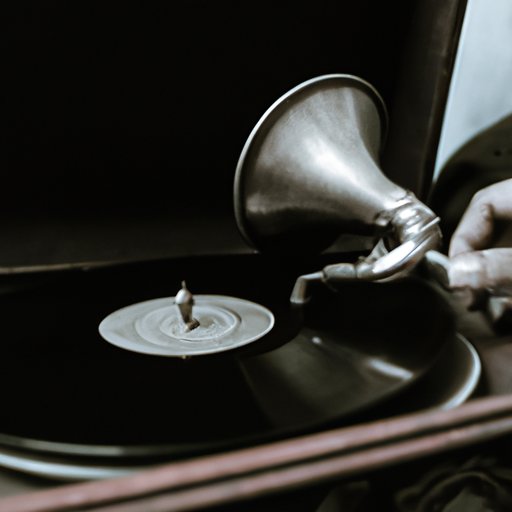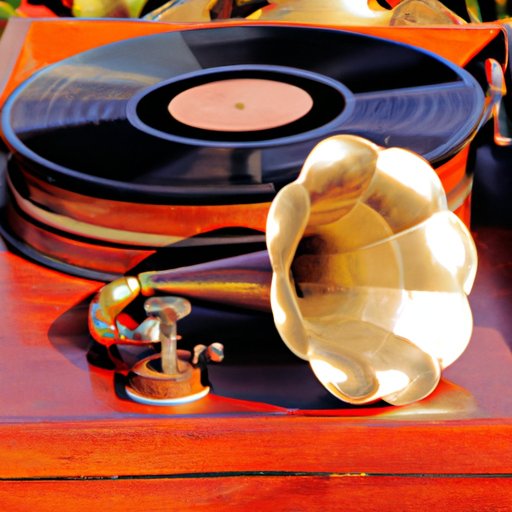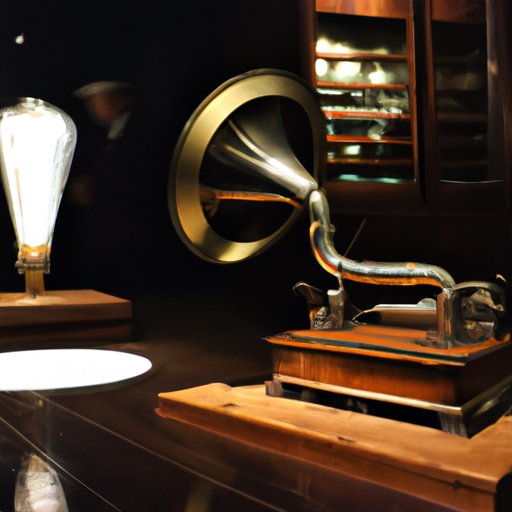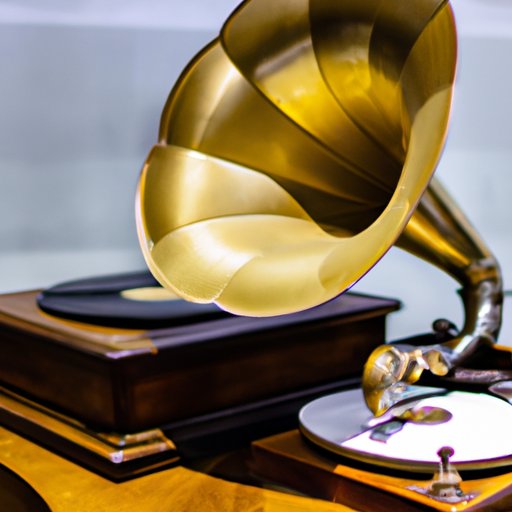Introduction
The phonograph is a device that was invented in 1877 by Thomas Edison to record and play sound. It was the first successful device for reproducing sound from a recording. This article will explore why the phonograph was invented and the impact it had on music and culture.
History of the Invention of the Phonograph
Thomas Edison was an American inventor who was responsible for inventing numerous devices, including the phonograph. On December 24th, 1877, Edison received a patent for his invention, which he referred to as his “talking machine”. The phonograph was the first device capable of recording and playing back sound.
Edison’s invention was based on a device called the phonautograph, which was invented by Édouard-Léon Scott de Martinville in 1857. The phonautograph used a sheet of paper with a stylus attached to it to record sound waves. However, the device was unable to play back the recordings. Edison improved upon this design by using a cylinder instead of a sheet of paper and adding a playback mechanism. He also added a needle and diaphragm to amplify the sound.
Since its invention, the phonograph has undergone many improvements and advancements. In 1888, Emile Berliner developed the gramophone, which used flat discs instead of cylinders. This made it easier and cheaper to mass produce recordings. In 1925, the electric microphone was introduced, allowing for louder and clearer recordings. In 1948, Columbia Records released the first long-playing (LP) record, which allowed for more music to be stored on one disk.
Impact of the Phonograph on Music and Culture
The invention of the phonograph had a profound impact on music and culture. Prior to the phonograph, music was primarily heard through live performances. With the introduction of the phonograph, it became possible to record and distribute music on a large scale. This led to the emergence of popular music genres such as jazz and blues, as well as the rise of the music industry.
According to Professor David Suisman of the University of Delaware, “Before the phonograph, the only way you could hear music was if someone was performing it in your presence. But the phonograph allowed people to have access to music without having to go out and find a performance, or even have someone perform for them.”
The phonograph also allowed for the widespread distribution of music. For example, in the 1920s and 1930s, records were sold in stores, sent through the mail, and even broadcast over the radio. This increased the availability of music to wider audiences and helped to popularize certain genres.

How the Phonograph Changed the Way People Listen to Music
The phonograph revolutionized the way people listen to music. Prior to the phonograph, music was primarily heard through live performances. With the introduction of the phonograph, it became possible to record and distribute music on a large scale. This transition from live performances to recorded media changed the way people experienced music.
The phonograph also allowed people to listen to music in the privacy of their own homes. This gave people more control over when and how they listened to music. Additionally, the phonograph enabled people to replay their favorite songs over and over again, which was not possible with live performances.

Benefits of the Phonograph Over Other Audio Recording Devices
The phonograph has several advantages over other audio recording devices. One of the most significant benefits is its technological advances. The phonograph was the first device to allow for the recording and playback of sound. It was also the first device to use a needle and diaphragm to amplify sound.
The phonograph was also much more affordable than other recording devices. This made it accessible to a wider range of people, which helped to increase the popularity of recorded music.

The Legacy of Thomas Edison and the Phonograph
Thomas Edison and the phonograph have had a lasting legacy on modern audio recording technology. Edison’s invention paved the way for future developments in recording technology, such as magnetic tape, compact discs, and digital audio. Additionally, the phonograph’s influence can still be seen in modern audio recording devices, such as vinyl records and turntables.
The phonograph also had a major impact on music and culture. It changed the way people listen to music and allowed for the widespread distribution of recordings. It also helped to popularize certain genres of music and gave rise to the modern music industry.
Conclusion
In conclusion, the phonograph was a revolutionary invention by Thomas Edison that changed the way people listen to music and experience culture. It allowed for the recording and distribution of music on a large scale, which opened up new possibilities for music production and consumption. The phonograph also had a lasting legacy on modern audio recording technology and helped to popularize certain genres of music. It is clear that the phonograph was an important invention that had a major impact on music and culture.
(Note: Is this article not meeting your expectations? Do you have knowledge or insights to share? Unlock new opportunities and expand your reach by joining our authors team. Click Registration to join us and share your expertise with our readers.)
